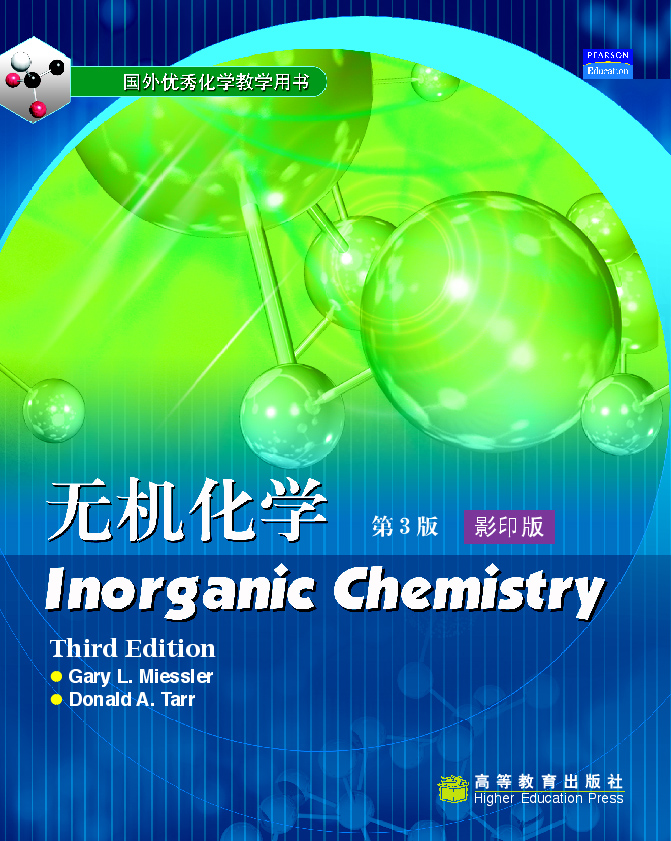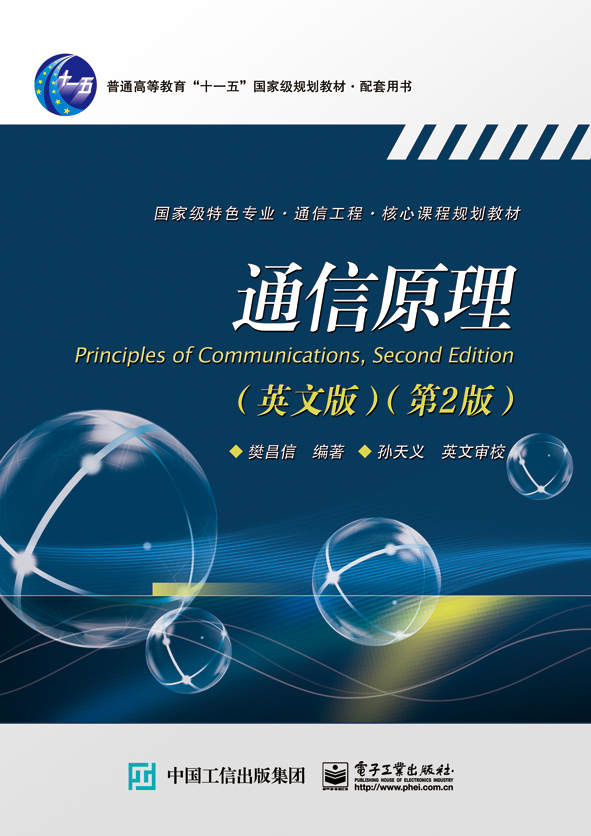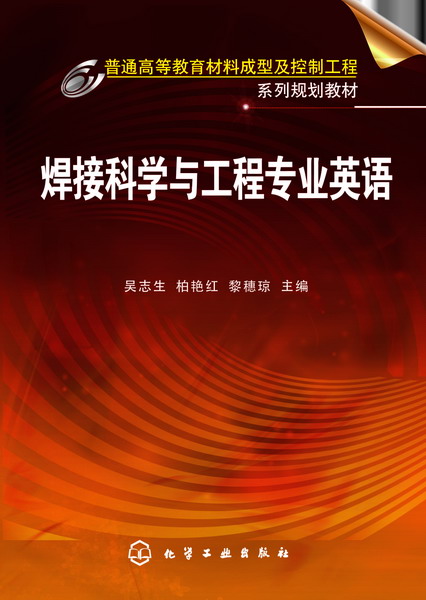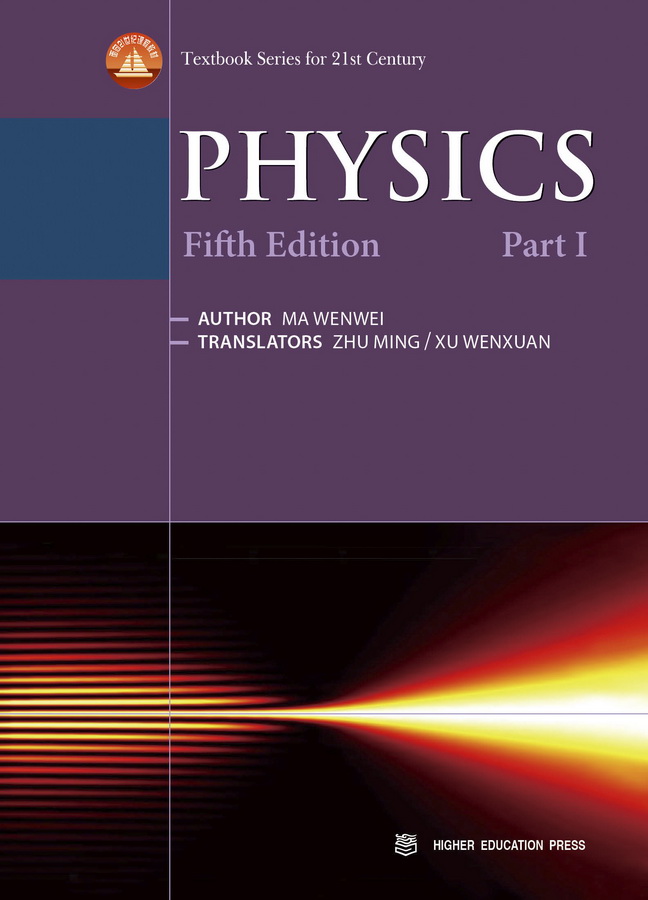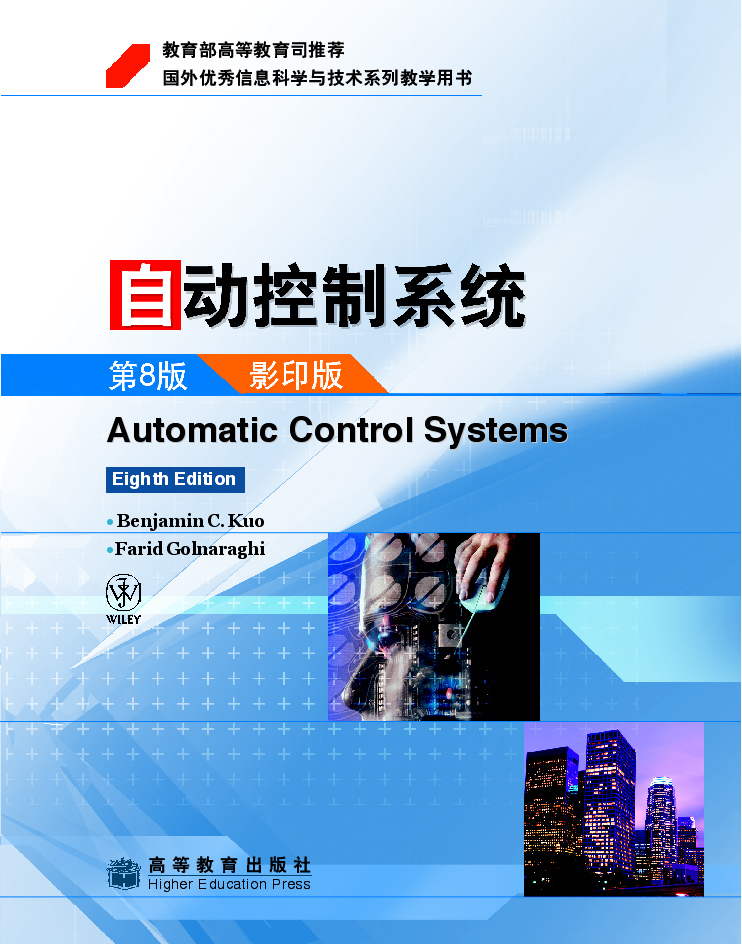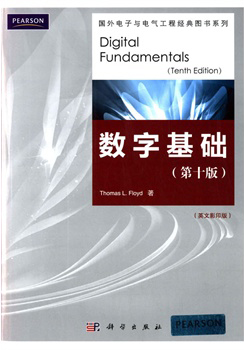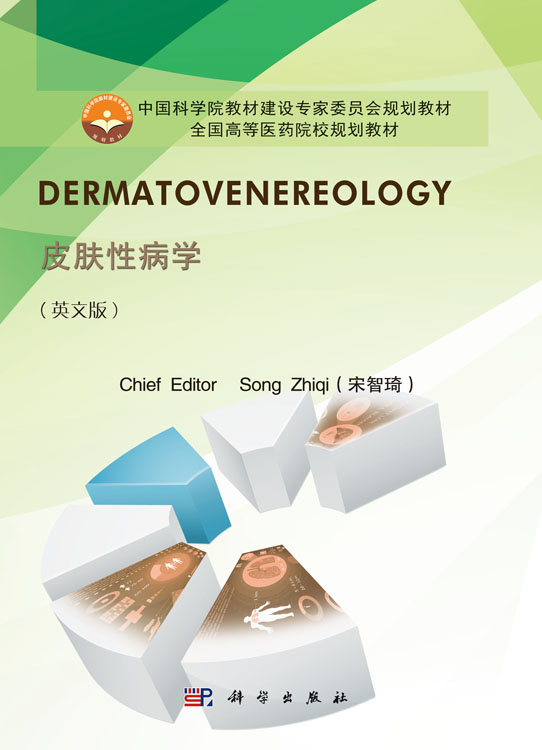无机化学(第3版)(影印版)
作者: GARYL.MIESSLER
出版时间:2004-10-20
出版社:高等教育出版社
- 高等教育出版社
- 9787040155860
- 1
- 248683
- 平装
- 16开
- 2004-10-20
- 1140
- 706
本书是国外优秀化学教学用书。全书共16章,主要包括无机化学介绍、原子结构、价键理论简介、对称性与群论、分子轨道、酸碱理论、晶体、主族元素、异构体、价键、原子光谱、反应及其机理、有机金属化学、有机金属反应及其机理、主族与有机金属的关联。每章节后有习题,书后有习题解析。并附录常用热力学数据表等内容。
本书体系合理,适用于化学和非化学类专业用做双语教学教材,也可用于教学参考。
1 INTRODUCTION TO INORGANIC CHEMISTRY
1-1 What is Inorganic Chemistry?
1-2 Contrasts with Organic Chemistry
1-3 Genesis of the Elements (The Big Bang) and Formation of the Earth
1-4 Nuclear Reactions and Radioactivity
1-5 Distribution of Elements on Earth
1-6 The History of Inorganic Chemistry
2 ATOMIC STRUCTURE
2-1 Historical Development of Atomic Theory
2-1-1 The Periodic Table
2-1-2 Discovery of Subatomic Particles and the BohrAtom
2-2 The Schrodinger Equation
2-2-1 The Particle in a Box
2-2-2 Quantum Numbers and Atomic Wave Functions
2-2-3 The Auf bau Principle
2-2-4 Shielding
2-3 Periodic Properties of Atoms
2-3-1 Ionization Energy
2-3-2 ElectronAffinity
2-3-3 Covalent and Ionic Radii
3 SIMPLE BONDING THEORY
3-1 Lewis Electron-Dot Diagrams
3-1-1 Resonance
3-1-2 Expanded Shells
3-1-3 Formal Charge
3-1-4 Multiple Bonds in Be and B Compounds
3-2 Valence Shell Electron Pair Repulsion Theory
3-2-1 Lone Pair Repulsion
3-2-2 Multiple Bonds
3-2-3 Electronegativity and Atomic Size Effects
3-2-4 Ligand Close-Packing
3-3 Polar Molecules
3-4 Hydrogen Bonding
4 SYMMETRY AND GROUP THEORY
4-1 Symmetry Elements and Operations
4-2 Point Groups
4-2-1 Groups of Low and High Symmetry
4-2-2 Other Groups
4-3 Properties and Representations of Groups
4-3-1 Matrices
4-3-2 Representations of Point Groups
4-3-3 Character Tables
4-4 Examples and Applications of Symmetry
4-4-1 Chirality
4-4-2 Molecular Vibrations
5 MOLECULAR ORBITALS
5-1 Formation of Molecular Orbitals from Atomic Orbitals
5-1-1 Molecular Orbitals from s Orbitals
5-1-2 Molecular Orbitals form p Orbitals
5-1-3 Molecular Orbitals from d Orbitals
5-1-4 Nonbonding Orbitals and Other Factors
5-2 Homonuclear Diatomic Molecules
5-2-1 Molecular Orbitals
5-2-2 Orbital Mixing
5-2-3 First and Second Row Molecules
5-2-4 Photoelectron Spectroscopy
5-2-5 Correlation Diagrams
5-3 Heteronuclear Diatomic Molecules
5-3-1 Polar Bonds
5-3-2 Ionic Compounds and Molecular Orbitals
5-4 Molecular Orbitals for Larger Molecules
5-4-1 FHF-
5-4-2 C02
5-4-3 H2O
5-4-4 NH3
5-4-5 BF3
5-4-6 Molecular Shapes
5-4-7 Hybrid Orbitals
5-5 Expanded Shells and Molecular Orbitals
6 ACID-BASE AND DONOR-ACCEPTOR CHEMISTRY
6-1 Acid-Base Concepts as Organizing Concepts
6-1-1 History
6-2 Major Acid-Base Concepts
6-2-1 Arrhenius Concept
6-2-2 Bronsted-Lowry Concept
6-2-3 Solvent System Concept
6-2-4 Lewis Concept
6-2-5 Frontier Orbitals and Acid-Base Reactions
6-2-6 Hydrogen Bonding
6-2-7 Electronic Spectra (Including Charge Transfer)
6-3 Hard and Soft Acids and Bases
6-3-1 Theory of Hard and Soft Acids and Bases
6-3-2 Quantitative Measures
6-4 Acid and Base Strength
6-4-1 Measurement ofAcid-Base Interactions
6-4-2 Thermodynamic Measurements
6-4-3 Proton Affinity
6-4-4 Acidity and Basicity of Binary Hydrogen Compounds
6-4-5 Inductive Effects
6-4-6 Strength of Oxyacids
6-4-7 Acidity of Cations in Aqueous Solution
6-4-8 Steric Effects 199
6-4-9 Solvation and Acid-Base Strength
6-4-10 Nonaqueous Solvents and Acid-Base Strength
6-4-11 Superacids
7 THE CRYSTALLINE SOLID STATE
7-1 Formulas and Structures
7-1-1 Simple Structures
7-1-2 Structures of Binary Compounds
7-1-3 More Complex Compounds
7-1-4 Radius Ratio
7-2 Thermodynamics of Ionic Crystal Formation
7-2-1 Lattice Energy and Madelung Constant
7-2-2 Solubility, Ion Size (Large-Large and Small-Small), and HSAB
7-3 Molecular Orbitals and Band Structure
7-3-1 Diodes, The PhotovoltaicEffect, and Light-Emitting Diodes
7-4 Superconductivity
7-4-1 Low-Temperature Superconducting Alloys
7-4-2 The Theory of Superconductivity (Cooper Pairs)
7-4-3 High-Temperature Superconductors (PBa2Cu307 and Related Compounds)
7-5 Bonding in Ionic Crystals
7-6 Imperfections in Solids
7-7 Silicates
8 CHEMISTRY OF THE MAIN GROUP ELEMENTS
8-1 General Trends in Main Group Chemistry
8-1-1 Physical Properties
8-1-2 Electronegativity
8-1-3 Ionization Energy
8-1-4 Chemical Properties
8-2 Hydrogen
8-2-1 Chemical Properties
8-3 Group 1 (ⅠA): The Alkali Metals
8-3-1 The Elements
8-3-2 Chemical Properties
8-4 Group 2 (Ⅱ A): The Alkaline Earths
8-4-1 The Elements
8-4-2 Chemical Properties
8-5 Group 13 (ⅢA) 256
8-5-1 The Elements 256
8-5-2 Other Chemistry of the Group 13 (IIIA) Elements 260
8-6 Group 14 (ⅣA) 261
8-6-1 The Elements 261
8-6-2 Compounds 267
8-7 Group 15 (ⅤA) 272
8-7-1 The Elements 272
8-7-2 Compounds 274
8-8 Group 16(Ⅵ A) 279
8-8-1 The Elements 279
8-9 Group 17 (ⅦA): The Halogens 285
8-9-1 The Elements 285
8-10 Group 18 (ⅧIA): The Noble Gases
8-10-1 The Elements
8-10-2 Chemistry
9 COORDINATION CHEMISTRY I: STRUCTURES AND ISOMERS
9-1 History
9-2 Nomenclature
9-3 Isomerism
9-3-1 Stereoisomers
9-3-2 Four-Coordinate Complexes
9-3-3 Chirality
9-3-4 Six-Coordinate Complexes
9-3-5 Combinations of Chelate Rings
9-3-6 Ligand Ring Conformation
9-3-7 Constitutional Isomers
9-3-8 Experimental Separation and Identification ofisomers
9-4 Coordination Numbers and Structures
9-4-1 Low Coordination Numbers (CN=1, 2, and 3)
9-4-2 Coordination Number 4
9-4-3Coordination Number 5
9-4-4 Coordination Number6
9-4-5 Coordination Number 7
9-4-6 Coordination Number 8
9-4-7 Larger Coordination Numbers
10 COORDINATION CHEMISTRY II: BONDING
10-1 Experimental Evidence for Electronic Structures
10-1-1 Thermodynamic Data
10-1-2 Magnetic Susceptibility
10-1-3 Electronic Spectra
10-1-4 Coordination Numbers and Molecular Shapes
10-2 Theories of Electronic Structure
10-2-1 Terminology
10-2-2 Historical Background
10-3 Ligand Field Theory
10-3-1 Molecular Orbitals for Octahedral Compkxes
10-3-2 OrbitalSplitting and Electron Spin
10-3-3 Ligand Field Stabilization Energy
10-3-4 Pi Bonding
10-3-5 Square-Planar Complexes
10-3-6 Tetrahedral Complexes
10-4 Angular Overlap
10-4-1 Sigma-Donor Interactions
10-4-2 Pi-Acceptor Interactions
10-4-3 Pi-Donor Interactions
10-4-4 Types of Ligands and the Spectrochemical Series
10-4-5 Magnitudes of eσ,eπ, and A
10-5 The Jahn-Teller Effect
10-6 Four-and Six-Coordinate Preferences
10-7 Other Shapes
11 COORDINATION CHEMISTRY III: ELECTRONIC SPECTRA
11-1 Absorption of Light
11-1-1 Beer-LambertAbsorption Law
11-2 Quantum Numbers of Multielectron Atoms
11-2-1 Spin-Orbit Coupling
11-3 Electronic Spectra of Coordination Compounds
11-3-1 Selection Rules
11-3-2 Correlation Diagrams
11-3-3 Tanabe-Sugano Diagrams
11-3-4 Jahn-Teller Distortions and Spectra
11-3-5 Examples of Applications of Tanabe-Sugano Diagrams: Determining △0 from Spectra
I1-3-6 Tetrahedral Complexes
11-3-7 Charge-Transfer Spectra
12 COORDINATION CHEMISTRY IV: REACTIONS AND MECHANISMS
12-1 History and Principles
12-2 Substitution Reactions
12-2-1 Inert and Labile Compounds
12-2-2 Mechanisms of Substitution
12-3 Kinetic Consequences of Reaction Pathways
12-3-1 Dissociation (D)
12-3-2 Interchange (I)
12-3-3 Association (A)
12-4 Experimental Evidence in Octahedral Substitution
12-4-1 Dissociation
12-4-2 Linear Free Energy Relationships
12-4-3 Associative Mechanisms
12-4-4 The Conjugate Base Mechanism
12-4-5 The Kinetic Chelate Effect
12-5 Stereochemistry of Reactions
12-5-1 Substitution in trans Complexes
12-5-2 Substitution in cis Complexes
12-5-3 Isomerization of Chelate Rings
12-6 Substitution Reactions of Square-Planar Complexes
12-6-1 Kinetics and Stereochemistry of Square-Planar Substitutions
12-6-2 Evidence forAssociative Reactions
12-7 The trans Effect
12-7-1 Explanations of the trans Effect
12-8 Oxidation-Reduction Reactions
12-8-1 Inner-and Outer-Sphere Reactions
12-8-2 Conditions for High and Low Oxidation Numbers
12-9 Reactions of Coordinated Ligands
12-9-1 Hydrolysis of Esters,Amides,and Peptides
12-9-2 Template Reactions
12-9-3 Electrophilic Substitution
13 ORGANOMETALLIC CHEMISTRY
13-1 Historical Background
13-2 Organic Ligands and Nomenclature
13-3 The 18-Electron Rule
13-3-1 Counting Electrons
13-3-2 Why 18 Electrons?
13-3-3 Square-Planar Complexes
13-4 Ligands in Organometallic Chemistry
13-4-1 Carbonyl (CO) Complexes
13-4-2 Ligands Similar to CO
13-4-3 Hydride and Dihydrogen Complexes
13-4-4 Ligands Having ExtendedπSystems
13-5 Bonding Between Metal Atoms and Organic Π Systems
13-5-1 LinearπSystems
13-5-2 CyclicπSystems
13-5-3 Fullerene Complexes
13-6 Complexes. Containing M-C,M=C,and M≡C Bonds
13-6-1 Alkyl and Related Complexes
13-6-2 Carbene Complexes
13-6-3 Carbyne (Alkylidyne) Complexes
13-7 Spectral Analysis and Characterization of Organometallic Complexes
13-7-1 Infrared Spectra
13-7-2 NMR Spectra
13-7-3 Examples of characterization
14 ORGANOMETALLIC REACTIONS AND CATALYSIS
14-1 Reactions Involving Gain or Loss of Ligands
14-1-1 Ligand Dissociation and Substitution
14-1-2 Oxidative Addition
14-1-3 Reductive Elimination
14-1-4 Nucleophilic Displacement
14-2 Reactions Involving Modification of Ligands
14-2-1 Insertion
14-2-2 Carbonyl Insertion (Alkyl Migration)
14-2-3 1,2 Insertions
14-2-4 Hydride Elimination
14-2-5 Abstraction
14-3 Otganometallic Catalysts
14-3-1 Example of Catalysis:Catalytic Deuteration
14-3-2 Hydroforrnylation
14-3-3 Monsanto Acetic Acid Process
14-3-4 Wacker(Smidt)Process
14-3-5 Hydrogenation by Wilkinson's Catalyst
14-3-6 Olefin Metathesis
14-4 Heterogeneous Catalysts
14-4-1 Ziegler-Natta Polymerizations
14-4-2 Water Gas Reaction
15 PARALLELS BETWEEN MAIN GROUP AND ORGANOMETALLIC CHEMISTRY
15-1 Main Group Parallels with Binary Carbonyl Complexes
15-2 The Isolobal Analogy
15-2-1 Extensions of the Analogy
15-2-2 Examples of Applications of the Analogy
15-3 Metal-Metal Bonds
15-3-1 Multiple Metal-Metal Bonds
15-4 Cluster Compounds
15-4-1 Boranes
15-4-2 Heteroboranes
15-4-3 Metallaboranes and Metallacarboranes
15-4-4 Carbonyl Clusters
15-4-5 Carbide Clusters
15-4-6 Additional Comments on Clusters
16 BIOINORGANIC AND ENVIRONMENTAL CHEMISTRY
16-1 Porphyrins and Related Complexes
16-1-1 Iron Porphyrins
16-1-2 Similar Ring Compounds
16-2 Other Iron Compounds
16-3 Zinc and Copper Enzymes
16-4 Nitrogen Fixation
16-5 Nitric Oxide
16-6 Inorganic Medicinal Compounds
16-6-1 Cisplatin and Related Complexes
16-6-2 Auranofin and Arthritis Treatment
16-6-3 Vanadium Complexes in Medicine
16-7 Study of DNA Using Inorganic Agents
16-8 Environmental Chemistry
16-8-1 Metals
16-8-2 Nonmetals
APPENDIX A ANSWERS TO EXERCISES
APPENDIX B-1 IONIC RADII
APPENDIX B-2 IONIZATION ENERGY
APPENDIX B-3 ELECTRON AFFINITY
APPENDIX B-4 ELECTRON EGATIVITY
APPENDIX B-5 ABSOLUTE HARDNESS PARAMETERS
APPENDIX B-6 CA, EA, CB, AND EB VALUES
APPENDIX B-7 LATIMER DIAGRAMS FOR SELECTED ELEMENTS
APPENDIX C CHARACTER TABLES
APPENDIX D ELECTRON-DOT DIAGRAMS AND FORMAL CHARGE
INDEX

